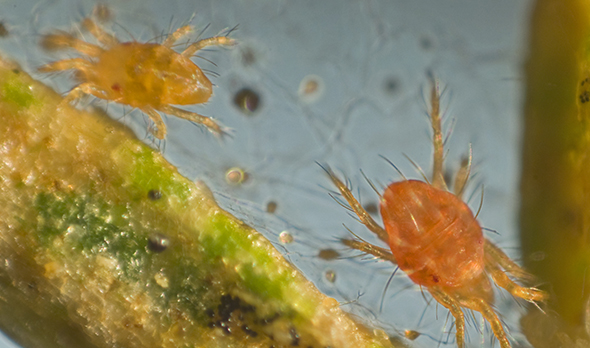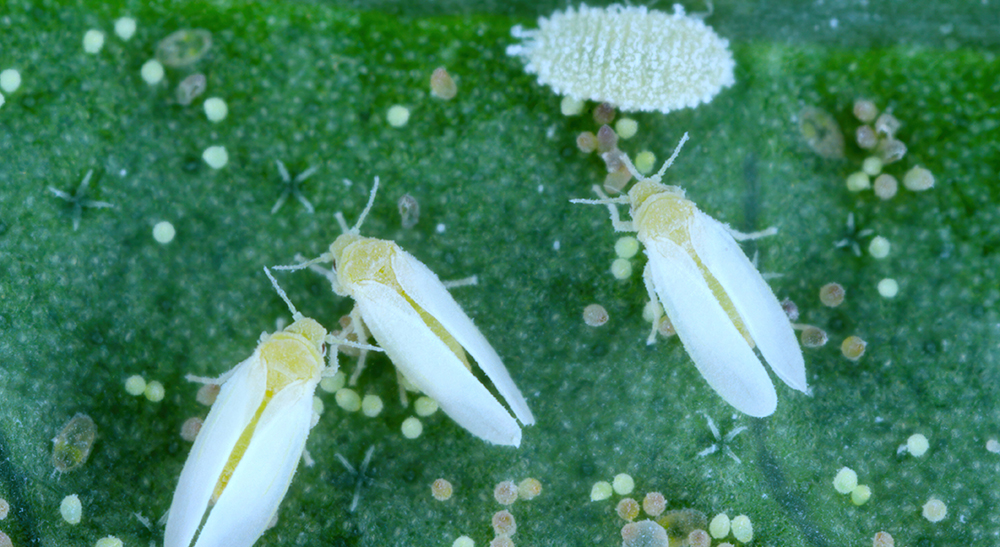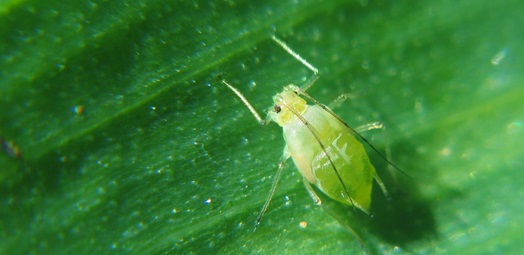
Hidden in small cobwebs woven underneath plant foliage or flowers, mites are tiny - sometimes microscopic insects. Their head and thorax are fused into a single region called the cephalothorax, and their mouthparts are grouped together, creating a false head known as the capitulum.
To enhance your understanding of mites, here are five captivating facts about them:
- Mites come in a wide spectrum of colors, including red, yellow, green, purple, black and translucent.
- Adult mites typically have four pairs of legs, which readily distinguish them from other insects. Mite larvae have three pairs of legs until they molt to the nymph stage. Then, a fourth pair emerges.
- Two-spotted spider mites are the most common mites to infest bedding-plant crops. Barely visible to the naked eye, they look like small, moving dots. The mites draw nutrients from plants with their scraping mouths, creating a blotchy or "salt and pepper" pattern on leaves.
- Heavy mite infestations cause leaves to turn yellow or brown and eventually fall off.
- There appears to be an abdomen in some mites. However, in many species, the cephalothorax and abdomen are compact.
What factors contribute to the prevalence of mites in greenhouses?
Mites are among the most common insects found in greenhouses due to several factors:
- Greenhouses provide a warm and stable environment, which is favorable for the reproduction and activity of mites.
- Greenhouses typically house a variety of plants, providing mites with a diverse range of host plants on which they can feed.
- The controlled environment of a greenhouse may limit the movement and effectiveness of natural predators of mites, such as predatory mites or insects.
- Greenhouse plants may experience stress due to factors like crowding, suboptimal light conditions, or nutrient imbalances, making them more susceptible to mite infestations.
- Mites can be introduced to greenhouses through contaminated plant material, equipment, or even on the clothing of workers, facilitating their spread.
How can you control them?
Mites are a common problem for many crops such as ornamentals, bedding plants, flowers, and foliage cuttings. To control these pests, you can use the ClearLeaf™ Insecticide/Miticide as a broadcast, fogger, or bench application in greenhouses. You can find the application rates on the label. This product is effective against various types of mites. To manage resistance, ClearLeaf™ offers two modes of action (Group 3A & 6) and a synergist to target tough-to-control mites.
It's important to implement integrated pest management (IPM) strategies in greenhouses to minimize mite infestations while considering the overall health of the ecosystem within the greenhouse environment.


